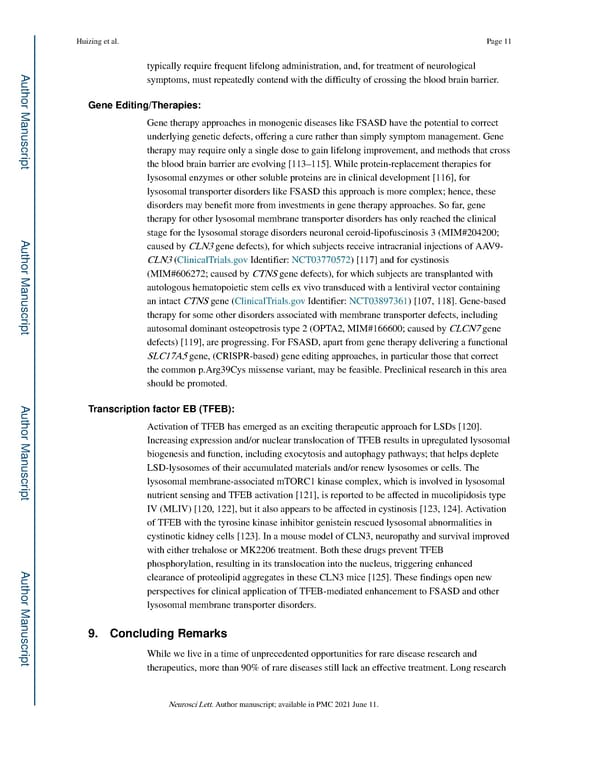Huizing et al. Page 11 typically require frequent lifelong administration, and, for treatment of neurological A uthor Man symptoms, must repeatedly contend with the difficulty of crossing the blood brain barrier. Gene Editing/Therapies: Gene therapy approaches in monogenic diseases like FSASD have the potential to correct uscr underlying genetic defects, offering a cure rather than simply symptom management. Gene therapy may require only a single dose to gain lifelong improvement, and methods that cross ipt the blood brain barrier are evolving [113–115]. While protein-replacement therapies for lysosomal enzymes or other soluble proteins are in clinical development [116], for lysosomal transporter disorders like FSASD this approach is more complex; hence, these disorders may benefit more from investments in gene therapy approaches. So far, gene therapy for other lysosomal membrane transporter disorders has only reached the clinical stage for the lysosomal storage disorders neuronal ceroid-lipofuscinosis 3 (MIM#204200; A uthor Man caused by CLN3 gene defects), for which subjects receive intracranial injections of AAV9- CLN3 (ClinicalTrials.gov Identifier: NCT03770572) [117] and for cystinosis (MIM#606272; caused by CTNS gene defects), for which subjects are transplanted with autologous hematopoietic stem cells ex vivo transduced with a lentiviral vector containing uscr an intact CTNS gene (ClinicalTrials.gov Identifier: NCT03897361) [107, 118]. Gene-based therapy for some other disorders associated with membrane transporter defects, including ipt autosomal dominant osteopetrosis type 2 (OPTA2, MIM#166600; caused by CLCN7 gene defects) [119], are progressing. For FSASD, apart from gene therapy delivering a functional SLC17A5 gene, (CRISPR-based) gene editing approaches, in particular those that correct the common p.Arg39Cys missense variant, may be feasible. Preclinical research in this area should be promoted. A Transcription factor EB (TFEB): uthor Man Activation of TFEB has emerged as an exciting therapeutic approach for LSDs [120]. Increasing expression and/or nuclear translocation of TFEB results in upregulated lysosomal biogenesis and function, including exocytosis and autophagy pathways; that helps deplete uscr LSD-lysosomes of their accumulated materials and/or renew lysosomes or cells. The lysosomal membrane-associated mTORC1 kinase complex, which is involved in lysosomal ipt nutrient sensing and TFEB activation [121], is reported to be affected in mucolipidosis type IV (MLIV) [120, 122], but it also appears to be affected in cystinosis [123, 124]. Activation of TFEB with the tyrosine kinase inhibitor genistein rescued lysosomal abnormalities in cystinotic kidney cells [123]. In a mouse model of CLN3, neuropathy and survival improved with either trehalose or MK2206 treatment. Both these drugs prevent TFEB phosphorylation, resulting in its translocation into the nucleus, triggering enhanced A uthor Man clearance of proteolipid aggregates in these CLN3 mice [125]. These findings open new perspectives for clinical application of TFEB-mediated enhancement to FSASD and other lysosomal membrane transporter disorders. uscr 9. Concluding Remarks ipt While we live in a time of unprecedented opportunities for rare disease research and therapeutics, more than 90% of rare diseases still lack an effective treatment. Long research Neurosci Lett. Author manuscript; available in PMC 2021 June 11.
 Free Sialic Acid Storage Disorder: Progress and Promise Page 10 Page 12
Free Sialic Acid Storage Disorder: Progress and Promise Page 10 Page 12